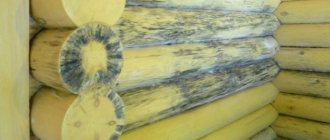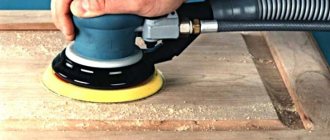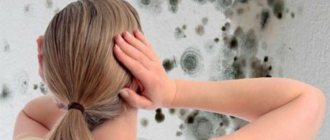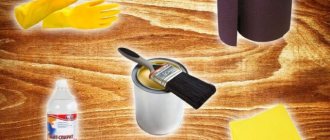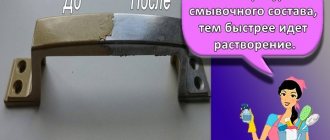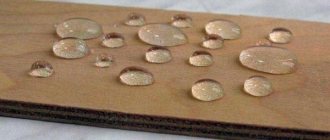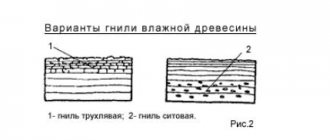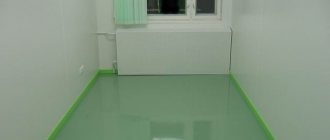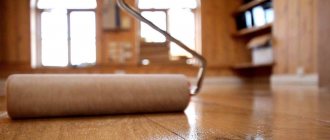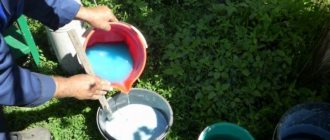When choosing flooring, consumers first consider natural materials, among which wood is the most popular. Environmental friendliness, attractiveness, quality, reliability and wide application possibilities - these qualities make wood a popular construction and finishing material.
But in addition to numerous advantages, wood has a number of disadvantages, among which its poor resistance to external factors stands out. In our article we will talk about means and methods of protecting wood from rotting.
What to process
Wood is subject to biological destruction, so if it is not treated, then, after a while, rotting will certainly begin. There are several reasons that cause this problem:
- increased air humidity;
- temperature changes;
- poor drying of raw materials;
- insufficient ventilation;
- freezing;
- condensation formation;
- contact with wet soil.
To avoid rotting, you need to resort to prevention during preparation and storage. Previously, when wood production technologies could not boast of perfection, cutting down trees for the production of lumber began in the winter, and with the onset of warmth, the material was used for private house construction and the manufacture of floor boards. During this time, the moisture content of the wood decreased significantly. However, today, in the age of progressive technologies, it is no longer necessary to keep wood for such a long time, because a technological approach is used to protect it from rotting.
Floor protection products
Treatment of a wooden floor involves protecting the wood from exposure and penetration of moisture using special waterproofing. If the floor boards are laid on an open veranda, then special paint is used for protection. And in the house, in order to prevent the formation of condensation, you need to create good ventilation and lay a vapor barrier coating, take care of the heat-insulating layer.
Varnishing the floor
Varnishing the floor
Types of material
There is a fairly wide range of varnishes on the market. Before you start, be sure to familiarize yourself with the features of the most popular representatives of this category.
Table. Properties of different wood varnishes
| Type of varnish | Characteristics |
| Water soluble | Advantages: dries quickly; adheres well to the base; doesn't stink. One- and two-component modifications are available for sale. The first ones usually last no more than 2-3 years - after this time the floor will have to be sanded and treated again. If you apply a two-component varnish in 3 layers, it will last about 10 years even in rather harsh operating conditions. But such material also costs much more. |
| Alkyd | The advantage is that the structure of the treated wood becomes more pronounced and beautiful. Disadvantage: long drying time. The varnish is excellent for covering the so-called. "floating" floor. To prevent the varnish from wrinkling, experts recommend limiting its consumption to a maximum of 120 g/m2. It is important that during the drying process the varnish is not exposed to heat from radiators and other heating devices. Contact with direct sunlight is also prohibited. |
| Anhydrous polyurethane | The main advantage is excellent wear resistance. Also, such varnishes tolerate contact with water and various chemical detergents well. Important! The moisture content of wood coated with such a product should be no more than 10%. Otherwise the coating will bubble. |
| Acid curing | Characterized by the greatest strength. Resistant to a wide variety of influences. Natural light shades are created on the floor material. You just need to follow the basic recommendations for using the product, namely: the varnish is mixed with the hardener strictly before using the mixture; the performer must wear personal protective equipment - a respirator; There must be a constant flow of air in the room. Violation of these recommendations may result in irritation of the mucous membranes for the performer. |
Protective means
Such compositions perform two useful functions:
- They preserve the wood and thereby prevent dangerous fungi from penetrating its structure, the impact of which leads to rotting of the wood.
- They maintain the integrity of the wood because they prevent it from cracking.
Depending on the components present and purpose, protective compounds are divided into the following groups:
- Wax based products.
Water-repellent mastic for floors
- Oil-based products.
Applying oil
- Painting compositions.
Impregnating varnish
Each of these groups has its own properties and characteristics, we will talk about them in more detail.
Painting compositions
Varnish is made to protect wood and give it a well-groomed appearance:
- When it is necessary to reliably protect hardwood, alkyd and polyurethane compounds are used. Treating a wooden floor with these products provides reliable protection against cracking for floor boards and also protects the wooden floor from mechanical stress.
Protection with polyurethane varnish
- For coniferous species, it is recommended to use an alkyl-urethane protective paint composition. Before covering the floorboards with it, their surface is first treated with acetone to get rid of the resin protruding from the wood.
- If you need to treat flooring made from valuable exotic varieties of trees, then it is recommended to use protective compounds for the manufacture of which natural ingredients were used. However, it must be taken into account that some flooring made from exotic species contains substances that interfere with the curing of the varnish, so the floor to be treated must first be primed. To do this, use a special wood primer, which gives additional protection to the boards and prevents the release of essential oils.
Antiseptic primer
Procedure for applying varnish
Various tools are used to apply varnish. So, for example, quick-drying water-soluble compounds are applied with rollers of the highest quality. The performer must distribute the material over the surface using exclusively translational movements. First, the product is applied across the flooring, after which it is leveled in the longitudinal direction, i.e. the surface is varnished “crosswise”.
Procedure for applying varnish
You can use a spatula to apply the first layer of material. The performer makes fairly quick S-shaped movements, evenly distributing the composition over the base. This technology allows for higher coating strength.
If using a brush, the material should be applied in neat U-shaped strokes. In this case, the new stroke should slightly overlap the previous one.
It is most convenient to start work from the wall opposite to the exit from the room - this way you will not have to walk on the applied composition.
Protective oils
Protective oils are universal compounds that are used for different types of wood. True, on boards for which certain varieties are used, for example, white meranti (merbau), white spots may appear, and this greatly spoils the visual appeal of the floor. Their appearance is caused by the fact that the oil penetrates deep into the structure of the wood and reacts there with certain substances. Therefore, before applying such protection, it is better to first consult with experienced people who will help with choosing the right composition.
Attention! Oils that are intended for processing wood flooring create high-quality protection for the floor and give the boards a pleasant softness to the touch.
However, a floor treated with this product looks attractive if there are no defects on its surface, because the oil does not hide them. Therefore, before resorting to such protection, you need to prepare the lumber in advance, that is, plan the floor boards, then sand them and smooth them. Only then coat the flooring with oil.
Floor protection
What to look for when purchasing?
Despite the fact that paint is one of the most popular materials for flooring, it must be chosen very carefully, because the floor should serve not only for protection, but also for decoration. Well-chosen paint can not only improve the quality of the coating, but also emphasize its appearance and structure. When purchasing, you need to consider the following points.
- Variety of varieties and types of wood. Because each type of wood reacts differently to paint, the amount of material required for painting varies.
- Conditions for using paint. Different paints are used to paint the floors inside and outside the building.
- Terms of use. Finishing materials can be used to cover both fresh boards and newly repaired ones.
When choosing paint for the floor, you need to pay attention to many nuances - Quantity and composition of old finishing. Such information is required in order to select a product that can be combined with the previous one.
- Coverage quality. In some cases, pre-treatment of the wood may be required.
READ MORE: Selecting and installing rubber flooring for the garage floor
All these factors should help determine which paint to choose from the huge selection.
Wax
This is a natural remedy, it is reasonable to use it in conjunction with oils. When wax is applied to a wooden floor, a thin film is formed; it temporarily protects against moisture, but does not protect the floor from damage. In addition, the use of wax is not recommended for those types of wood that contain calcium carbonate or silica, because the wax will react with them, after which the internal structure of the wood flooring will begin to deteriorate and thereby cause deformation of the boards.
Functional protective compounds - impregnations
Wood is susceptible to mold, mildew and rot, and this material is also loved by rodents and insects. In addition, wood belongs to the line of fire hazardous materials. However, all this can be avoided if special impregnations are used for protection. If you are interested in how to treat logs, in this case impregnations will come in handy. Here are the most popular ones:
- Fire retardant impregnations. This type of protection is used in the construction of public buildings. But for the construction of private houses they are used somewhat less frequently. Among this line, impregnations that contain active salts stand out. When applied, they penetrate deep into the boards, and if a fire occurs, a gas shell is formed that prevents a fire from starting. However, the floor boards will begin to char. For fire protection, putties and painting compounds can also be used, which also prevent open flames from occurring.
Fire retardants
- Mechanical protection or drying of floor boards in chambers specially designed for this purpose helps to get rid of excess moisture in lumber, protecting it from destruction. If the floor boards are well dried, then even after many years of service they will not be affected by fungus and mold. To increase the service life of the flooring, it is necessary to ventilate the boards from time to time in the summer through holes that are specially provided for this purpose in the foundation.
- To reliably protect a wooden floor, universal antiseptics will come to the rescue: Novotex, Pinotex and others. These are very strong chemicals that contain sulfuric acid, which completely eliminates the possibility of rotting. This product is successfully used for treating subfloors and joists. However, you should be careful when using it because sulfuric acid is not safe for humans.
- Water-repellent impregnations. These products provide reliable protection to the floor boards; in addition, they prevent the spread of insects.
- Insecticides. Such compounds protect lumber from pests.
Any such composition is applied to the surface of a wooden floor very carefully. If the floor boards have already been processed at the factory, then they do not require additional protection, but “clean” lumber requires high-quality impregnation. Therefore, before you buy raw materials or finished lumber, ask the seller whether the processing has been completed. If yes, then find out for what purposes: from exposure to moisture, fire or fungal damage.
Instructions for preparing a wooden floor for coating
The procedure depends on whether you are working with a new floor or a previously used structure.
Guide for a new floor
First of all, check the condition of the fasteners that secure the deck boards. The heads of screws and nails need to be “sunk” into the material by about 2-3 mm. Next, the remaining recesses are covered with a sealing agent. Instead, you can use a special putty designed for wood processing. It is important that the color of the material matches the color of the boards as much as possible.
Drive in the nail heads and apply putty.
Cover the deck with starter varnish and let it dry. The drying time is determined by the moisture content of the boards. If the material humidity is more than 12%, the varnish will dry for a very long time - up to several months. If the boards have been well dried, the waiting period will be reduced to 2-3 weeks.
Apply varnish to the floor
Guide for old floor
If the existing deck boards are in good condition and do not require replacement, preparation begins by removing the existing paint or other coating. If you find defective boards, be sure to replace them before starting work.
Old paint should be removed
The paint can be easily removed using a sanding machine. But it is not advisable to buy this unit for single use. If your place of residence does not provide such tools for rent, use the old and proven manual method.
Prepare the following:
- iron (preferably one that you don’t mind);
- paper. Take it with a reserve, it will take a lot;
- special paint remover;
- electric plane;
- grinder with an attachment for sanding wooden surfaces;
- several spatulas;
- sandpaper. Practice shows that it is most convenient to work with material having a grain size of 150-180.
Proceed to remove the old paintwork. Place paper on the base and place a well-heated iron on top of it. As a result of this treatment, the paint will come off the floor and stick to the sheet. Remove the remaining areas of the coating with a spatula and knife. If paint has become embedded in the floor material, apply a stripper according to the manufacturer's instructions.
Video - Removing old paint from the floor
Remove the thin top layer of material from the cleaned boards. An electric plane will help you with this. Make sure that the fastener heads do not protrude above the boards.
Electric planer
Important! The work is quite dusty, so for your own safety, wear a respirator and safety glasses.
Sand the surface using a grinder with the previously mentioned attachment and sandpaper. Collect the dust, but do not throw it away - it may be useful to you in the future.
Sanding a wooden floor
Fill cracks and other flooring defects. If you do not have a special primer of a suitable color, use a mixture of PVA glue and wood dust. Add dust until the desired color is obtained. If you use the second option, be careful and attentive: any excess glue that appears must be immediately removed from the surface. This is easily done with a damp cloth.
For putty, mix sawdust and PVA glue
Finally, all you have to do is apply a starter varnish to the floor and let it dry. The recommendations are similar to the previous case.
Protection of logs from insects
Protective treatment of flooring is an important process that must be approached responsibly. However, providing reliable protection to a wooden floor is not enough; you should also think about the joists, which are most often subject to attacks by rodents and insects. Logs, like boards, are treated with special means that will provide reliable and high-quality protection. In private housing construction, resin is often used for this purpose, which is heated very much before application and applied to the surface of the lag. After the resin hardens, it forms a reliable protection for the wood structure and thereby protects it from pests.
You will find out what wood impregnations are available by watching this video review:
average rating 0
more than 0 ratings
Share link
Comments
Yuri 07/09/2018 22:05
It’s good that experts have created so many useful and necessary impregnations and floor coverings. You can choose a high-quality coating for any purpose and for every taste! Beautiful and high quality!
